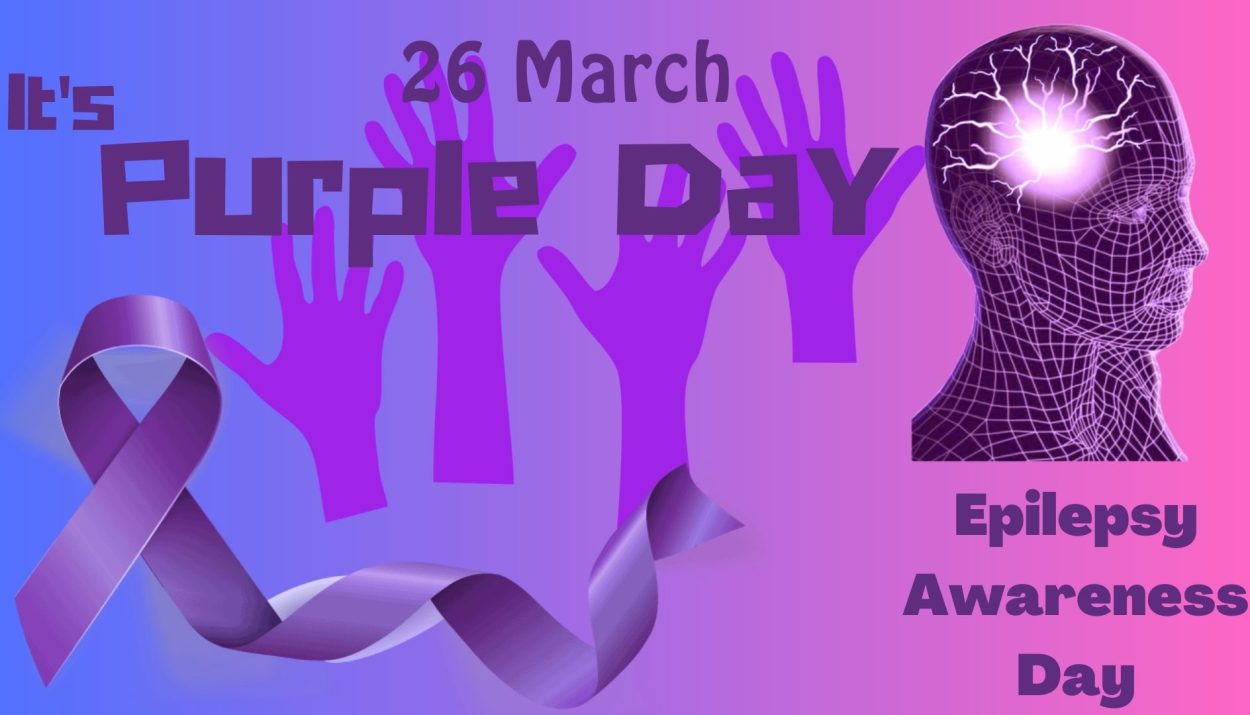Purple Day is an annual international event dedicated to raising awareness about epilepsy. It takes place on March 26th every year and aims to educate people about this neurological disorder and reduce the stigma surrounding it. This day is also known as the “Purple Day of Epilepsy”.
What is Epilepsy?
Epilepsy is a chronic non-communicable neurological disorder that affects the brain’s electrical activity, leading to seizures. It can affect anyone, regardless of age, gender, or ethnicity. Seizures can take various forms, from staring spells to convulsions, and can last from a few seconds to several minutes. Following migraines, strokes, and Alzheimer’s, epilepsy ranks as the fourth most prevalent neurological disorder.
Although epilepsy can stem from several underlying disease mechanisms, the root cause of the disorder remains unidentified in roughly half of all cases worldwide. Some potential factors that may contribute to the development of epilepsy include genetic predisposition, brain abnormalities, head injuries, prenatal injuries, various types of infections, and more.
Epilepsy symptoms can manifest as temporary loss of consciousness, awareness, or movement, along with disruptions in sensation, mood, cognitive functions, or other bodily functions like hearing, taste, and vision. Symptoms vary according to the type of seizure.
While there is no known cure for epilepsy, treatment with medication, surgery, or other therapies can help control seizures and improve the quality of life for people living with the condition.
According to World Health Organization (WHO)- Epilepsy is a prevalent neurological disorder worldwide, affecting approximately 50 million individuals and ranking among the most common of its kind. The majority of people with epilepsy, around 80%, reside in low- and middle-income countries. It is a condition with a long-standing history, as evidenced by written records dating back to 4000 BCE.
From a Young Girl’s Idea to an International Movement
Purple Day of Epilepsy is a global initiative aimed at raising awareness about epilepsy and reducing the stigma surrounding the condition. It was founded in 2008 by a young girl (9 years old) named Cassidy Megan from Nova Scotia, Canada, who wanted to educate people about epilepsy after being diagnosed with the condition herself. By creating an avenue, she provided an opportunity for individuals to acquire knowledge, participate actively, and offer support for raising public awareness about epilepsy while also debunking the misconceptions and fears associated with it.
The event is celebrated on March 26th each year and encourages people worldwide to wear purple and organize events to raise awareness about epilepsy.
Purple Day gained greater visibility and more organized campaigns in the United States and worldwide when the New York-based Anita Kaufmann Foundation collaborated with the Epilepsy Association of Nova Scotia to launch the initiative in 2009. In that same year, Purple Day events saw the participation of over 100,000 students, 95 workplaces, and 116 politicians. The Anita Kaufmann Foundation secured the trademark for Purple Day in 2011, and the event has since grown in scope and influence.
How to Participate in Purple Day?
Participating in Purple Day of Epilepsy is easy and can be done in various ways. One way is to wear purple clothing or accessories on March 26th to show support for people living with epilepsy. One can participate in a local or national event.
Another way is to organize an event, such as a walk, run, or fundraiser, to raise awareness about epilepsy and funds for epilepsy research. People can also share information about epilepsy on social media, using hashtags such as #PurpleDay, #PurpleAwarenessDay and #EpilepsyAwarenessDay.
The Importance of Raising Awareness and Support for Epilepsy
Epilepsy has been shrouded in fear, misconceptions, discrimination, and social stigma for centuries, which persist in several countries today. These attitudes can have a detrimental effect on the lives of individuals with epilepsy and their families, reducing their quality of life.
Read- Impact of Genetic Disorders on Society
Raising awareness and support for epilepsy is essential for several reasons. First, it helps reduce the stigma associated with the condition, which can make it challenging for people living with epilepsy to lead a normal life. It can also help increase understanding about epilepsy and improve access to resources and support for people with the condition.
Furthermore, raising awareness and funding for epilepsy research can help improve treatment options and potentially find a cure for the condition.
